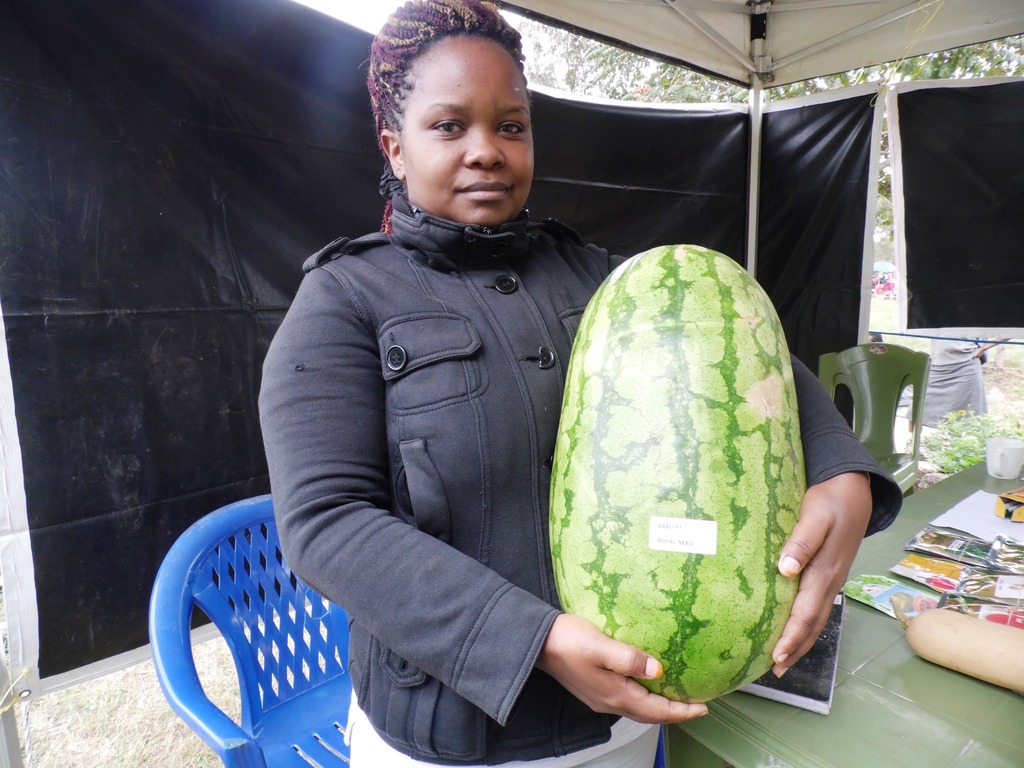A seed company officer holds a watermelon during the 2016 Machakos ASK Show. Dry region farmers can use polythene lining to cut irrigation in dry areas. Photo by Laban Robert.
Dry region farmers using plastic linings in covering soil may not incur irrigation costs for up to two months as the material reduces water loss.
Trials in the Taita-Taveta’s driest region have shown that a polythene lining can preserve water in the soil for six to eight weeks when complimented by organic matter in the process described as plasticulture.
Six to eight weeks is an almost half life of some crops like watermelons, which require about four months for fruiting and maturing.
Watermelons that were grown at Mbololo, Ikanga Village were irrigated twice from transplanting to harvesting.
Management of Arid Zones Initiative and Development Option (MAZIDO) pilot project revealed that addition of organic matter helps in holding water in the soil while improving the soil structure upon decay.
The organisation’s Executive Director John Mlamba said the method can help farmers minimise irrigation costs, while booting food security and revenue.
Depending on the severity of drought, irrigation can be done daily, twice a week on once.
In the plasticulture, a two-feet deep basin with one and half metres width is dug out before organic matter is filled in. Top soil is mixed with animal or any other manure then put on top of the matter before the polythene lining cover.
“The organic matter holds the water moisture for more than six weeks. This is supported by the laying of polythene lining covering the area around the stem of the crops, preventing the direct sunlight,” Mlamba said.
READ ALSO: Drip kit saves over 70 per cent water in kitchen garden irrigation
READ ALSO: Polythene lining keeps ducks home for Machakos farmer
READ ALSO: Trenches store roadside water for Kitui farmer
The matter encourages the multiplication of essential living organisms for aeration of the soil.
Watermelons averaging three kilos were harvested and sold to earn Sh18,000, according to the director.
The plastic material increases the temperatures in the soil. Given that the holes through it are limited, the moisture is maintained between the sheet and the soil layer. It turns into water droplets when the weather is cool.
At the same time, the heat generated between the soil and the polythene sterilizes the soil by inhibiting growth of pathogens like fusarium wilt.
The initiative is one of the MAZIDO’s projects of adopting climate-smart technologies to reduce the impacts of drought and meeting food needs.
Write comment (0 Comments)

















